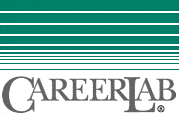This is an exercise to help you get a clear direction if you're confused about your career path. Designing a new job or career is much like designing a custom home. If you hired an architect to design your dreamhouse, they might ask you to remember previous homes and comment on things you liked or disliked about them. If you enjoyed having a sun porch, a walkout basement, and an oversize pantry, you could design those features into your new place. If you disliked a musty basement and too-small closets, you could avoid those items in the new plan.
You may design your next job or career the same way. Think about your past jobs, write down your likes and dislikes about each of them. Then design a new path that incorporates your likes and avoids your dislikes. In my own case, I like writing, publishing, and one-on-one consulting. I want to include them in any future job. I'm less fond of interpreting financials and spreadsheets. I'll minimize my exposure to them in the future by having financial experts around.
How to Begin
Divide your work experience into short 3-5 year segments--by job title, by boss, by location, by projects, or by any other convenient method. Reason: It's easier to remember short, specific time frames than the entire past at once. Include volunteer work experience, and even hobby or sporting interests, if you're considering them as career directions.
Take a separate sheet of paper for each of these time frames, and divide the page into two columns. On the left side of the page, write down all the things you liked about the job. On the right side, itemize the things you disliked about the job--and be as specific and detailed as possible. It's not too helpful to say, for example, "I disliked the people." That's much too general. It's more useful to say, "I disliked people who were pushy and rude."
Things to Think About
Use the categories below to guide your thoughts. Since every job involves most of these items, try to include notes and comments about each:
Think through each time frame carefully. Where were you? What were your big challenges? Your big successes? Your major failures or disappointments? How were you and your boss getting along? How did you feel about the organization? Were you proud and happy to be working there?
This isn't a 15-minute exercise where you drain your brain once and for all. It's a "refrigerator exercise." You tape it to the refrigerator and make notes from time to time as you walk by. This is a "think piece." You mull it over in your mind for several days, or even several weeks. In general, it's better to make long detailed lists rather than short generic ones. The more data you have, the easier you'll see trends and patterns.
Examples
Here are a few examples of what others have written:
Liked about boss:
Affirmed and encouraged me
Recognized performance
Fostered teamwork
Objectively critiqued and coached areas for growth
Like
working for someone who is focused and prioritizes effectively, versus someone who
continually changes priority from one thing to another--or making everything the same
high priority.
Disliked about boss:
micromanaged every little detail
constant criticisms of
minutiae
disliked reporting to two bosses at the same time
Liked about the work itself:
Huge variety
Being the key decision maker in the
department
Making high-pressure formal presentations to board of directors
Disliked about the work:
Less able to know what was going on in an ever larger,
more complex company
Lack of time and funding to improve systems as volume and
complexity grew
Not having a back-up to co-create, generate new ideas
Finishing the Exercise
People often object that this exercise is too idealistic. After all, we can't always have everything we want. I agree that we must pay attention to reality, but at the same time, it's important to dream a little too. You may not incorporate all your likes into your next work assignment; but chances are, if you have your priorities firmly in mind, you'll hit a major home run.
Next step: go to Part 2 of this three-part series, How to Create a Career Blueprint
 William S. Frank, M.A., is founder and President of CareerLab. Since 1978, he has
devoted more than 20,000 hours as a career, outplacement, and human resources consultant
to employees, managers, senior executives, and boards of directors of more than 200
major U.S. corporations. He wrote 200 Letters For Job Hunters, published by Ten Speed
Press, and he created the RED HOT Cover Letter collection in the Career Center at
America Online, which is visited by more than 1,000,000 visitors per month. For more
information about CareerLab, visit www.careersite.com.
William S. Frank, M.A., is founder and President of CareerLab. Since 1978, he has
devoted more than 20,000 hours as a career, outplacement, and human resources consultant
to employees, managers, senior executives, and boards of directors of more than 200
major U.S. corporations. He wrote 200 Letters For Job Hunters, published by Ten Speed
Press, and he created the RED HOT Cover Letter collection in the Career Center at
America Online, which is visited by more than 1,000,000 visitors per month. For more
information about CareerLab, visit www.careersite.com.